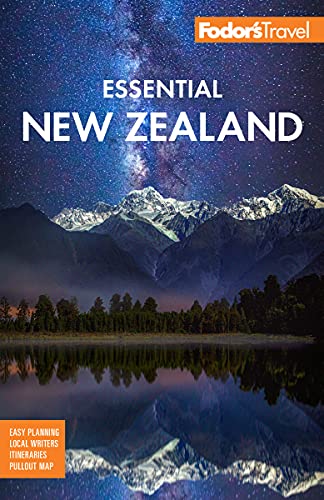The Poor Knights Islands
Jacques Cousteau once placed the Poor Knights Islands among the world's top 10 dive locations. Underwater archways, tunnels, caves, and rocky cliffs provide endless opportunities for viewing many species of subtropical fish. On a good day you'll see soft coral, sponge gardens, gorgonian fields, and forests of kelp.
Two large islands and many islets make up the Poor Knights, remnants of an ancient volcanic eruption 12 nautical miles off the stunning Tutukaka coast, a half-hour drive east of Whangarei. The ocean around them is a marine reserve, extending 800 meters (½ mile) from the islands. Indeed the islands themselves are a nature reserve; landing on them is prohibited.
At 7.9 million cubic feet, Rikoriko Cave, on the southern island's northwest side, is one of the world's largest sea caves. It's known for its acoustics. Ferns hang from its roof, and underwater cup coral grows toward the rear of it. (Normally found at depths of 200 meters, the cave light has tricked the coral into thinking it is deeper.) Visibility at the Poor Knights is between 20 and 30 meters, but in Rikoriko Cave it goes up to 35 to 45 meters.
A dense canopy of regenerated pohutukawa covers the islands, flowering brilliant scarlet around Christmas time. Native Poor Knights lilies cling to cliff faces, producing bright red flowers in October. Rare bellbirds (koromikos) and red-crowned parakeets (kakarikis) thrive in the predator-free environment. Between October and May, millions of seabirds come to breed, including the Buller's shearwaters that arrive from the Arctic Circle. But possibly the most distinguished resident is the New Zealand native tuatara, a reptile species from the dinosaur age that survives only on offshore islands.
New Zealand fur seals bask on the rocks and feed on the abundant fish life, mostly from July to October, and year-round dolphins, whales, and bronze whaler sharks can be seen in the surrounding waters. In summer you can see minke and rare Bryde's whales, too. In March stingrays stack in the hundreds in the archways for their mating season.
Conditions rarely prevent diving, which is good year-round. That said, don't expect the same experience you'll get diving off Australia's Great Barrier Reef. There aren't as many colorful fish, and the water is cooler. In October, the visibility drops to about 18 to 20 meters because of a spring plankton bloom, though this attracts hungry marine life. The best places for novices are Nursery Cove and shallower parts of the South Harbour.
—Richard Pamatatau and Toni Mason




